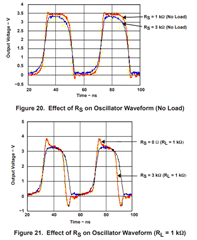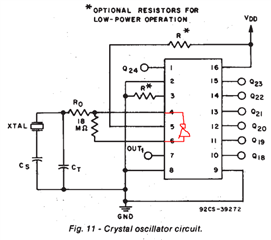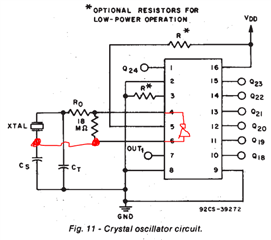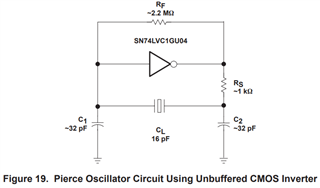Other Parts Discussed in Thread: SN74LVC1GU04, SN74LVC1G80
Hello,
I was wondering if we could get some help, as we are using your CD4521B as a frequency divider, but our crystal is not oscillating for a strange reason. The Crystal output stays high.
This is our circuit, which if I have not missed anything matches the Crystal Oscillator Circuit from the Datasheet.
The crystal that we are using is the following: ABLS-4.194304MHZ-B4-T
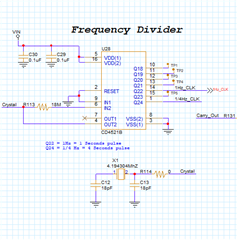
Would you have any ideas or suggestions why the Out2 / In2 is being held hight?
Thanks





